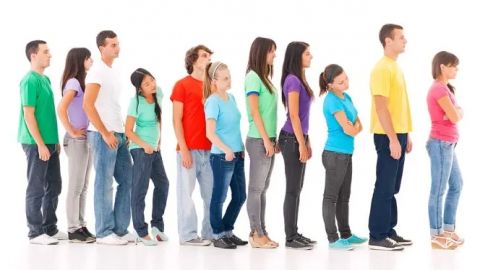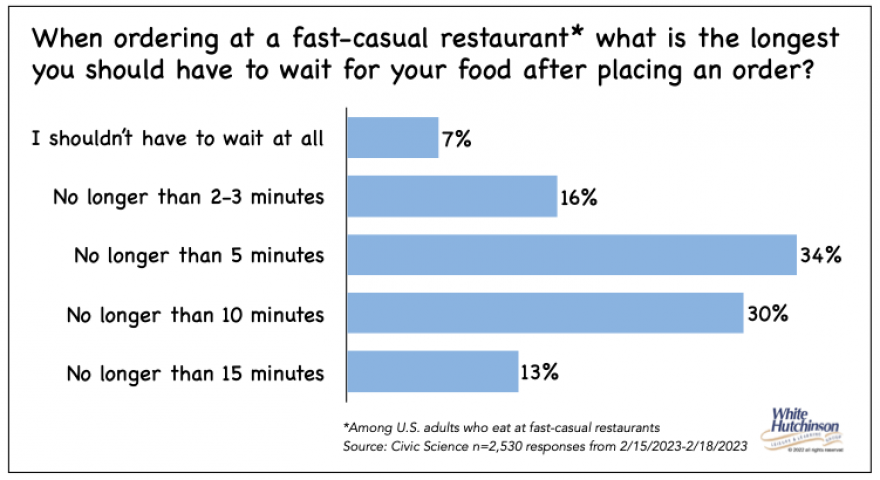
Vol. XXIII, No. 3, March 2023
- Editor's corner
- 2023 forecast for the attractions industry
- Esports isn't living up to its hype
- The weekday daytime leisure economy
- How the young adult market will shift
- Pistachio is a recent flavor trend
- For young adults, owning a VR headset is as rare today as it was in 2018
- Have we returned to pre-pandemic normalcy?
- Long waits reduce revenues and profits
- Store vacancies open opportunities
- Covid-related popularity of pickleball may be faltering
- Why LBE models need to be different today
- Competitive socializing with soccer
- It's all about perceived value, not just price
- Births down not totally bad news
- Announcing Agritourism Today
- Surge pricing comes to bowling
Long waits reduce revenues and profits
They say patience is a virtue, but it's becoming an exceedingly rare quality in modern society. According to surveys, all the luxuries of everyday life have made most people incredibly less patient across almost every aspect of their lives. Three-quarters of people in a recent survey said they believe the dominance of digital technology, such as smartphones and on-demand TVs, is to blame for an ever-growing lack of patience. Technology teaches us to expect instant gratification, but the physical world rarely works that way.

Waiting in line is one of the many things people are losing patience with. It's been called a "timeless form of torture." In a recent 2022 survey, 69% said waiting in line elicits negative feelings, including boredom, annoyance, frustration, and impatience. This indicates that people do not want to wait even when getting something desirable. Nearly 75% of people surveyed said they sometimes leave a physical line before it's their turn. People 18-44 are most likely to leave a physical line before it's their turn.
One area where long waits can cost location-based entertainment businesses (LBEs) revenues, profits, and customer satisfaction is the ordering and delivery of food and beverages. There's the wait in line to buy it and then the wait to get the order.
Many LBEs are now serving food fast-casual style - people order at one location and then wait for their food to be delivered to another location or delivered to their table. A survey last month of 2,530 adults examined how long people will wait for their food after placing an order. The survey found that more than half, 57%, won't wait more than 5 minutes, and nearly a quarter aren't interested in waiting more than 3 minutes.

The survey also asked people how long they were willing to wait at a fast-food restaurant for their food after ordering. There was far less patience there. More than three-quarters of people (76%) were willing to wait no longer than 5 minutes.
This means that to be successful with food and beverage sales, LBEs must design the capacity and throughput of their food and beverage facilities to accommodate busy times. This includes both the design of the kitchen and bar, as well as staffing levels.
Food and beverage sales can be significant at LBEs. In fact, for many models such as eatertainment and competitive socializing, the food and beverage is often more of a draw and produces higher per capita revenues than the entertainment. Even if an LBE can deliver food-worthy contemporary food and beverage, it won't appeal to have customers return or even post something positive on social media if they can get it delivered in what they consider an acceptable time.
Subscribe to monthly Leisure eNewsletter
Vol. XXIII, No. 3, March 2023
- Editor's corner
- 2023 forecast for the attractions industry
- Esports isn't living up to its hype
- The weekday daytime leisure economy
- How the young adult market will shift
- Pistachio is a recent flavor trend
- For young adults, owning a VR headset is as rare today as it was in 2018
- Have we returned to pre-pandemic normalcy?
- Long waits reduce revenues and profits
- Store vacancies open opportunities
- Covid-related popularity of pickleball may be faltering
- Why LBE models need to be different today
- Competitive socializing with soccer
- It's all about perceived value, not just price
- Births down not totally bad news
- Announcing Agritourism Today
- Surge pricing comes to bowling


